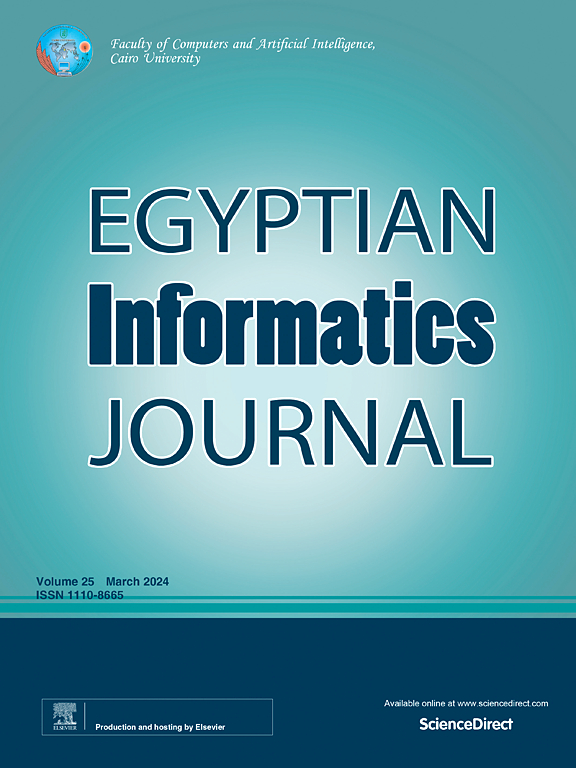High-accuracy lung disease classification via logistic regression and advanced feature extraction techniques
IF 5
3区 计算机科学
Q1 COMPUTER SCIENCE, ARTIFICIAL INTELLIGENCE
引用次数: 0
Abstract
Lung disease diagnosis through medical imaging integrated with machine learning has seen significant advancements. This study investigates the optimization of lung disease classification by exploring various preprocessing, feature extraction, and machine-learning classifier combinations. Our methodology begins with an input dataset of lung X-ray images, which undergoes preprocessing steps such as image sharpening and histogram equalization to enhance image quality. Subsequently, feature extraction techniques, including Scale-Invariant Feature Transform (SIFT), Histogram of Oriented Gradients (HOG), and Local Binary Patterns (LBP), are applied to the pre-processed images. We evaluate the effectiveness of several machine learning classifiers—Naive Bayes (NB), K Nearest Neighbors (KNN), Decision Tree (DT), Logistic Regression (LR), and Support Vector Machine (SVM)—on both original and pre-processed images to determine the optimal classifier. Following the selection of the best-performing classifier, i.e., Logistic Regression, we further optimize the classification process by applying combinations of the feature extraction techniques (SIFT + HOG, SIFT + LBP, HOG + LBP, SIFT + HOG + LBP). The SIFT + HOG + LBP feature extraction, in combination with Logistic Regression, performed the best on the original images, obtaining an accuracy of 97.12 %, precision of 97.97 %, recall of 97.55 %, and F1-score of 97.76 %. Our study presents the comparative performance of each preprocessing and feature extraction technique, both individually and in combination, in bringing about an improvement in the accuracy of lung disease detection. The study concludes with the identification of the most effective preprocessing and feature extraction combination, coupled with the best machine learning classifier, providing a robust framework for enhanced lung disease diagnosis.
求助全文
约1分钟内获得全文
求助全文
来源期刊

Egyptian Informatics Journal
Decision Sciences-Management Science and Operations Research
CiteScore
11.10
自引率
1.90%
发文量
59
审稿时长
110 days
期刊介绍:
The Egyptian Informatics Journal is published by the Faculty of Computers and Artificial Intelligence, Cairo University. This Journal provides a forum for the state-of-the-art research and development in the fields of computing, including computer sciences, information technologies, information systems, operations research and decision support. Innovative and not-previously-published work in subjects covered by the Journal is encouraged to be submitted, whether from academic, research or commercial sources.
 求助内容:
求助内容: 应助结果提醒方式:
应助结果提醒方式:


